Northeastern students designed a snake robot that could help NASA find water on the moon
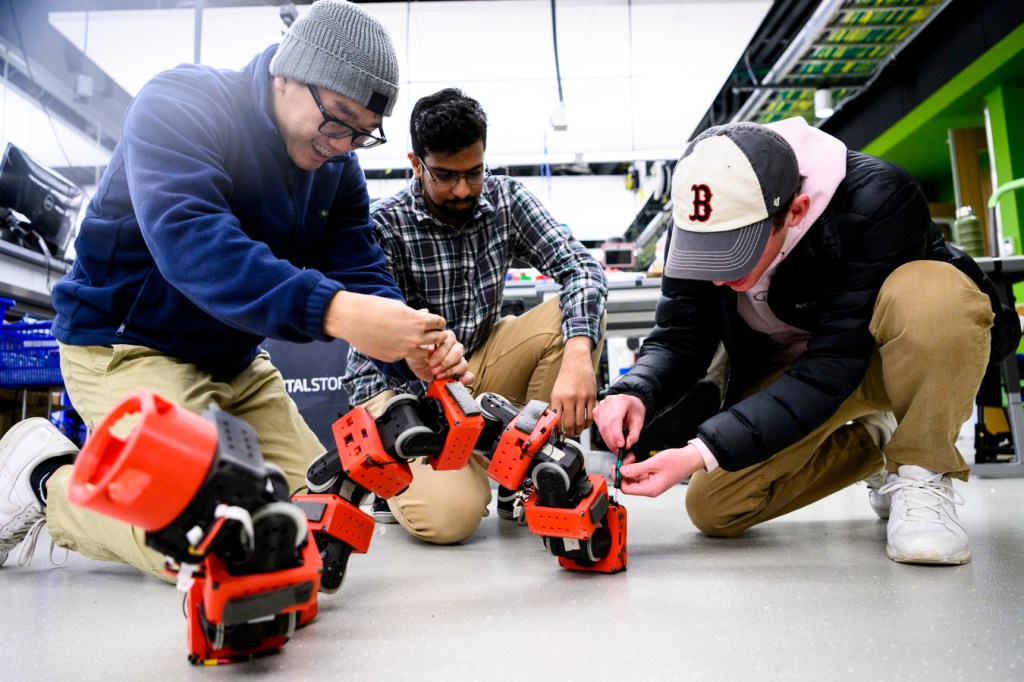
When Northeastern’s team of student roboticists showed up in Pasadena, California, in November to compete in NASA’s Breakthrough, Innovative and Game-changing Idea Challenge, the judges took one look at their robot and had some questions.
After seeing the team’s snakelike robot shapeshift into a hexagonal loop and tumble down a 50-meter hill without sustaining damage, they had only praise.

“One of the judges told me in person he was actually very skeptical of us being able to show any meaningful form of mobility and capability,” says Alireza Ramezani, Northeastern assistant professor of electrical and computer engineering and faculty adviser on the project. “And after our demos, after my students’ presentations, they were all convinced that this is the way to go.”
Facing off against the likes of MIT and California Institute of Technology, Northeastern’s COBRA–Crater Observing Bio-inspired Rolling Articulator–earned top honors at this year’s BIG Idea Challenge: the Artemis Award. BIG Idea tasks teams of students with developing alternative modes of navigating extreme terrain, providing funding and support along the way.
After nine months of work on their serpentine spacefarer, even the team was impressed with how the robot had performed. More than that, they were excited by the interest COBRA had received from NASA and industry partners who are eager to launch Northeastern’s robot to the moon.
COBRA’s ability to move across flat ground using serpentine sidewinding and transform into a tumbling loop make it perfect for exploring hard-to-navigate lunar craters that scientists suspect hold frozen water. By identifying locations with frozen water deposits, COBRA could pave the way for lunar colonization.
“You can’t really use a lunar orbiter from a distance to inspect the ice water content,” Ramezani says. “You actually have to go there and do proximity evaluation. The robot can be used as a probe, as an autonomous vehicle that can tumble down the craters, go to the lowland area and turn into a snake robot to do some sidewinding and evaluate ice water content in these craters.”
In its snakelike form, COBRA can sidewind like a snake across sand or assume a spiral shape that allows it to roll down hills in a more stable way. For long, steep hills, like lunar craters, the robot can connect its head and tail, transforming into a loop that can pick up serious momentum rolling downhill.
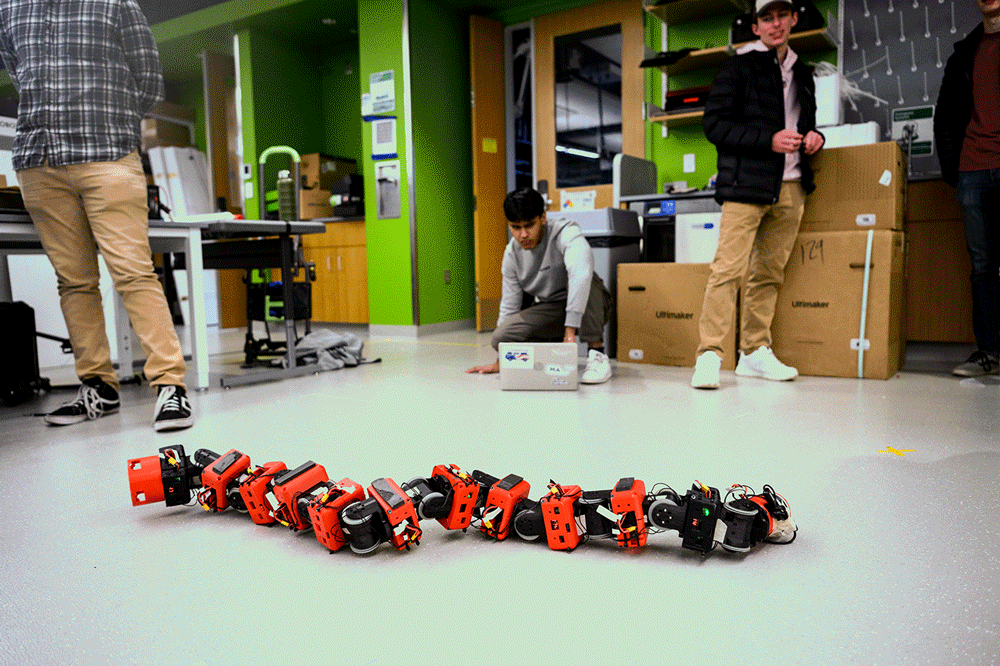
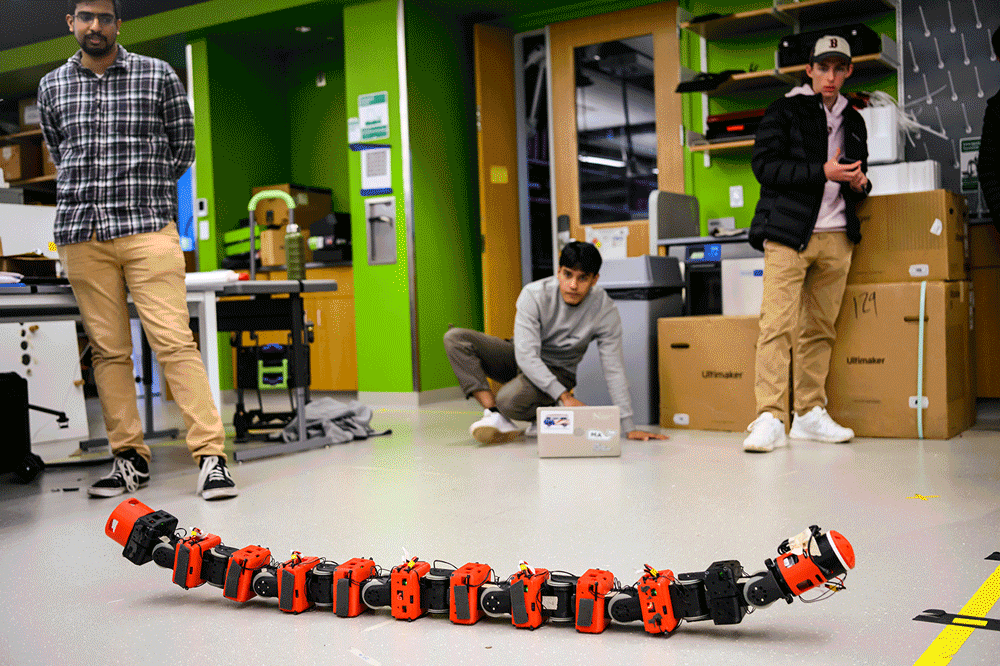
But the robot’s transformational, bio-inspired design was not always the plan. The team looked at hopping, walking and crawling robots before settling on something that can harness even partial gravity to roll down lunar craters, making it more energy efficient in the process. But rolling doesn’t help when it comes to navigating countless lunar obstacles. That’s where the snakelike design came in.
“There are craters, there are big rocks that you might not be able to get over, so we wanted to combine it with a different type of mobility,” team lead Nolan Smithwick says. “In this case we chose sidewinding because that is primarily found in snakes that travel over a really porous surface, like sand, and that’s kind of what the … lunar surface is like.”
For NASA and private space exploration companies, COBRA’s lightweight design is also key. Constructed using 3D printing, the robot weighs about 20 pounds, or 9 kilograms, compared to other robots in the competition that were pushing 200 pounds.
“It’s pretty lightweight, and when you’re considering that it’s around $1 million per kilogram to launch, then anything that you can cut down is pretty cost effective,” Smithwick says.

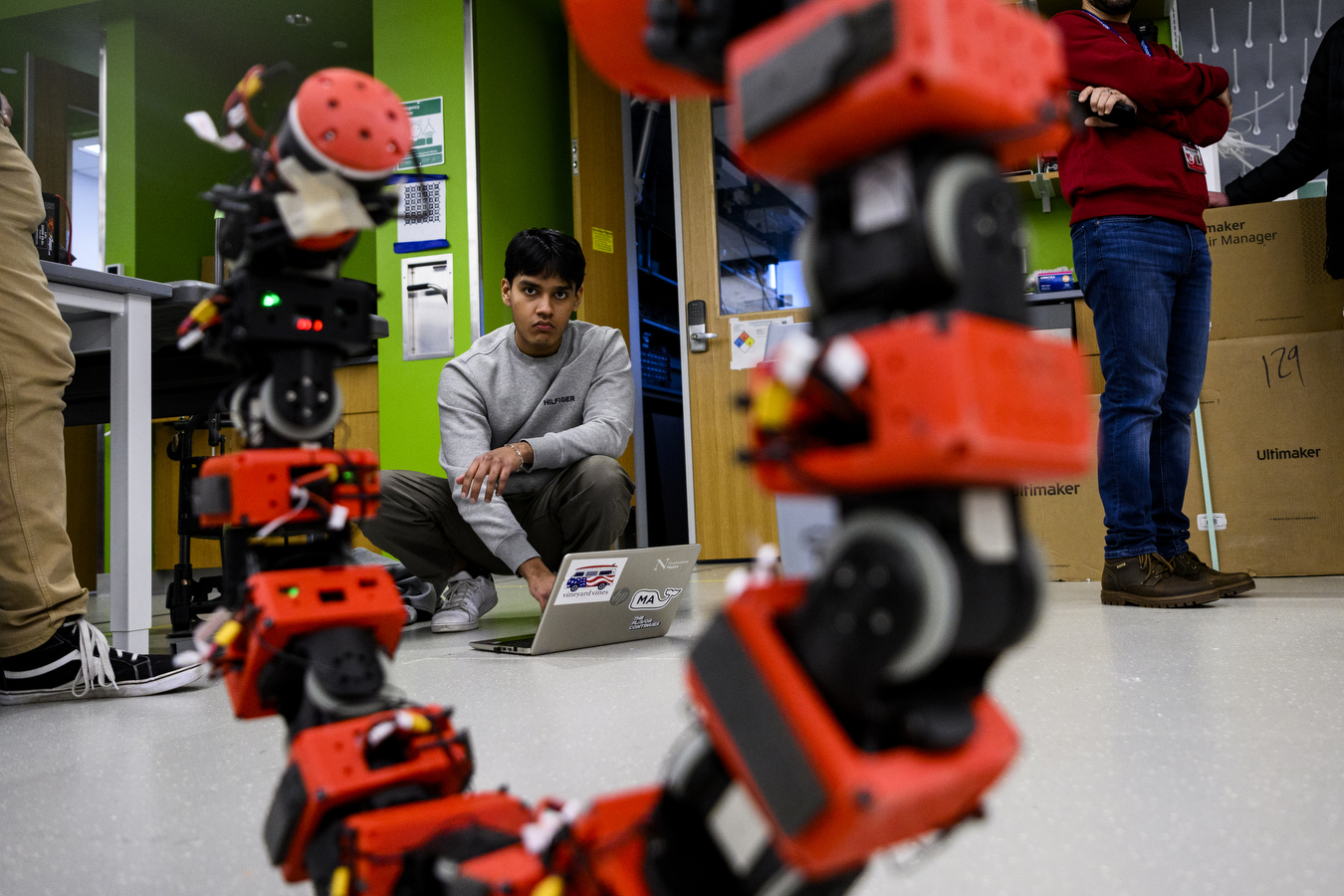
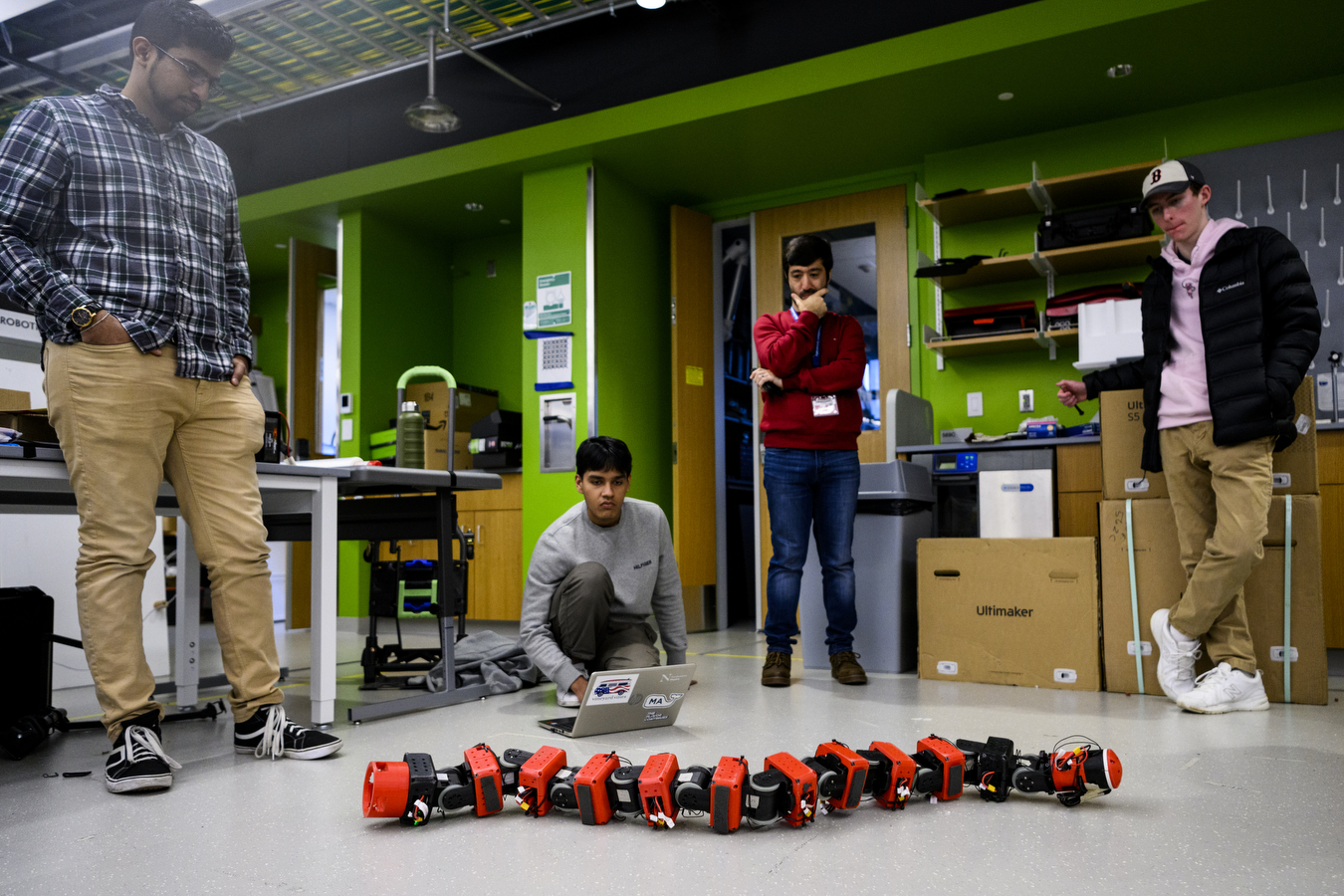
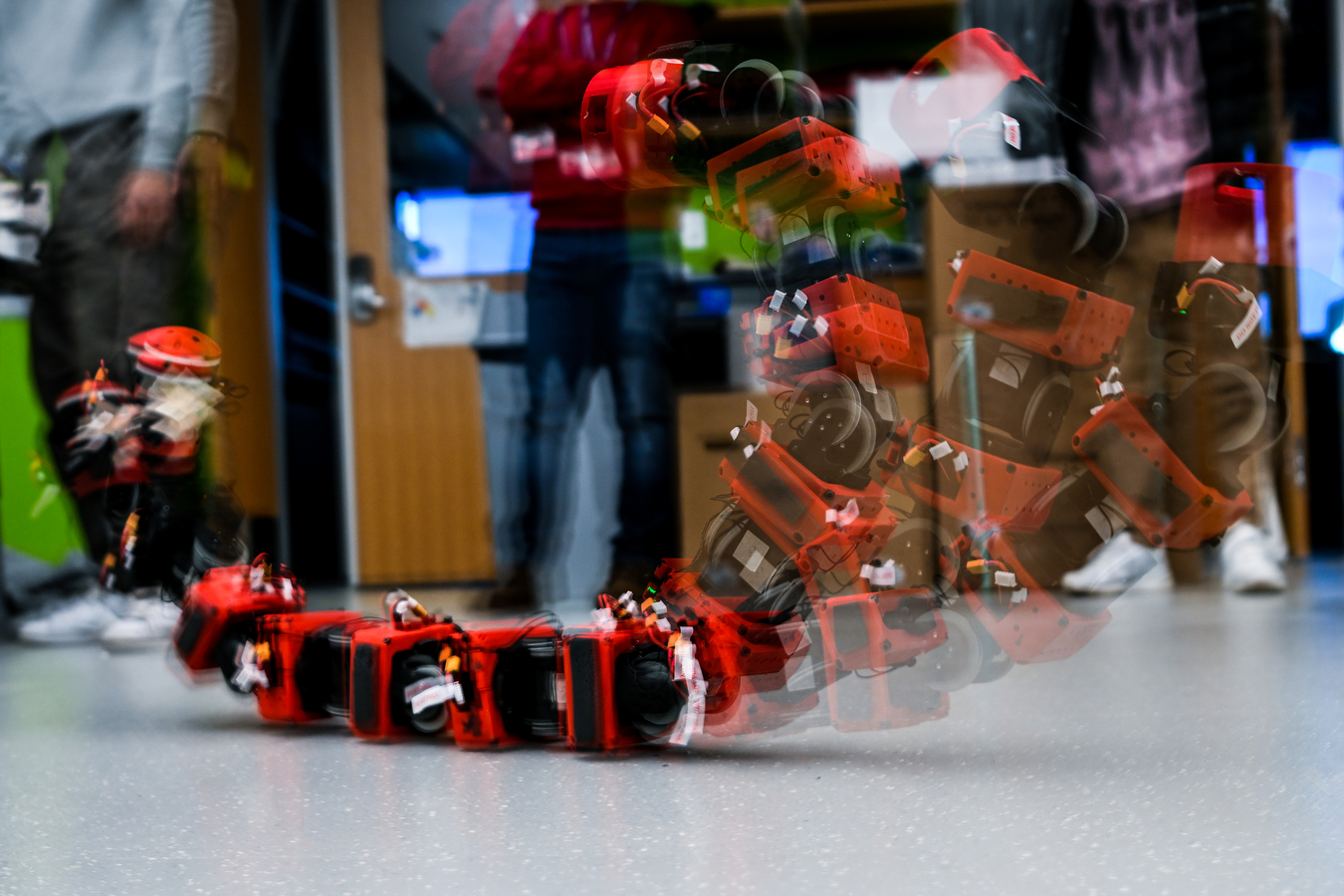
Now that Northeastern’s team has proven COBRA can make some moves, it will focus on expanding the robot’s suite of sensors to help it detect the moon’s frozen water. By adding sensors, radars and infrared cameras, Adarsh Salagame, a Northeastern Ph.D. student providing guidance on the project, says the teams will be “giving it some sense of where it is in the surroundings and actually being able to control itself more precisely.”
One potential technology partner even provided the team with a neutron spectrometer that is specifically designed to detect the presence of water on the lunar surface.
“That should give scientists a better idea of where to go deeper and where to look, and it gives us some information because in a place like Shackleton Crater it’s completely dark,” Salagame says. “You don’t have any information about what it looks like, and on the ground you have no information. This gives you that initial basis to decide what to do next.”
Looking back on COBRA’s sidewinding journey to success, the team never anticipated it would go from the floor of Northeastern’s Interdisciplinary Science & Engineering Complex to the cold lunar surface––but after this year’s BIG Idea Challenge, that’s now a reality.
For the students who put in long nights and countless hours over the last nine months, it’s a testament to the hard work and ingenuity they poured into their creation.
“It’s really motivating to know that what we’ve been doing is actually meaningful and we can actually create something that is useful and potentially can work on the moon,” Salagame says.
For media inquiries, please contact Alexa Kummrow at a.kummrow@northeastern.edu or 617-373-5718.






